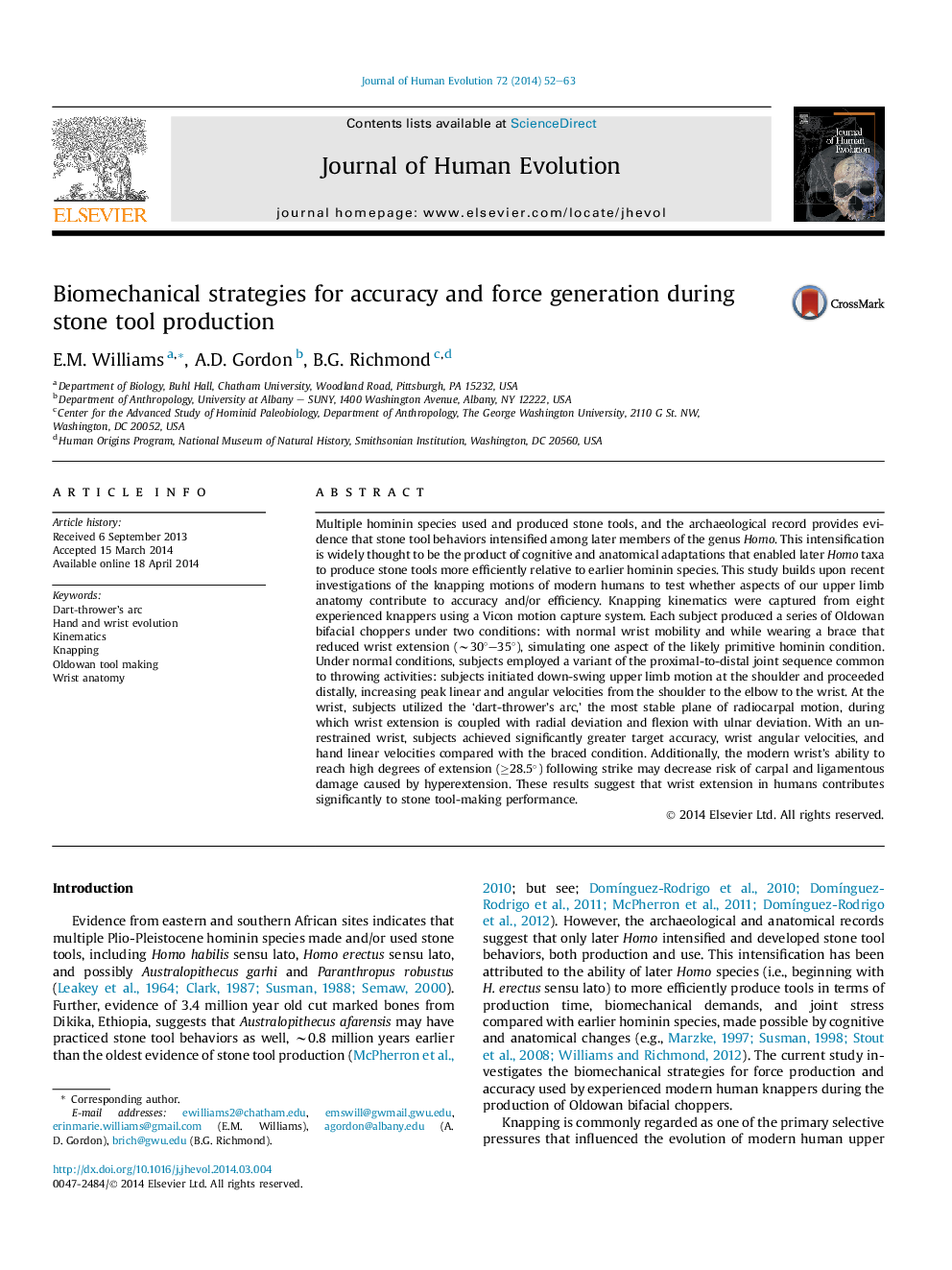| کد مقاله | کد نشریه | سال انتشار | مقاله انگلیسی | نسخه تمام متن |
|---|---|---|---|---|
| 4556104 | 1628177 | 2014 | 12 صفحه PDF | دانلود رایگان |
Multiple hominin species used and produced stone tools, and the archaeological record provides evidence that stone tool behaviors intensified among later members of the genus Homo. This intensification is widely thought to be the product of cognitive and anatomical adaptations that enabled later Homo taxa to produce stone tools more efficiently relative to earlier hominin species. This study builds upon recent investigations of the knapping motions of modern humans to test whether aspects of our upper limb anatomy contribute to accuracy and/or efficiency. Knapping kinematics were captured from eight experienced knappers using a Vicon motion capture system. Each subject produced a series of Oldowan bifacial choppers under two conditions: with normal wrist mobility and while wearing a brace that reduced wrist extension (∼30°–35°), simulating one aspect of the likely primitive hominin condition. Under normal conditions, subjects employed a variant of the proximal-to-distal joint sequence common to throwing activities: subjects initiated down-swing upper limb motion at the shoulder and proceeded distally, increasing peak linear and angular velocities from the shoulder to the elbow to the wrist. At the wrist, subjects utilized the ‘dart-thrower's arc,’ the most stable plane of radiocarpal motion, during which wrist extension is coupled with radial deviation and flexion with ulnar deviation. With an unrestrained wrist, subjects achieved significantly greater target accuracy, wrist angular velocities, and hand linear velocities compared with the braced condition. Additionally, the modern wrist's ability to reach high degrees of extension (≥28.5°) following strike may decrease risk of carpal and ligamentous damage caused by hyperextension. These results suggest that wrist extension in humans contributes significantly to stone tool-making performance.
Journal: Journal of Human Evolution - Volume 72, July 2014, Pages 52–63
